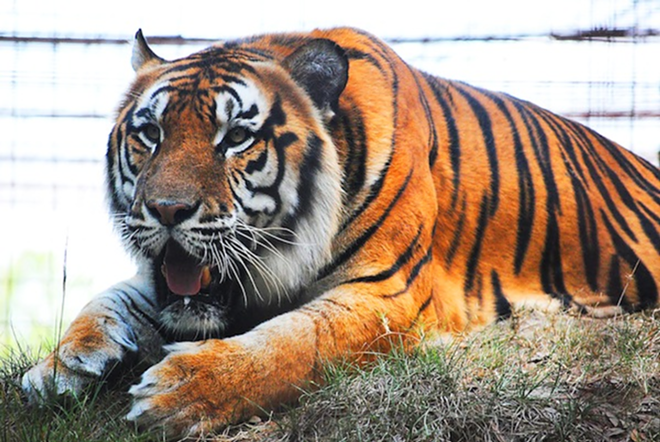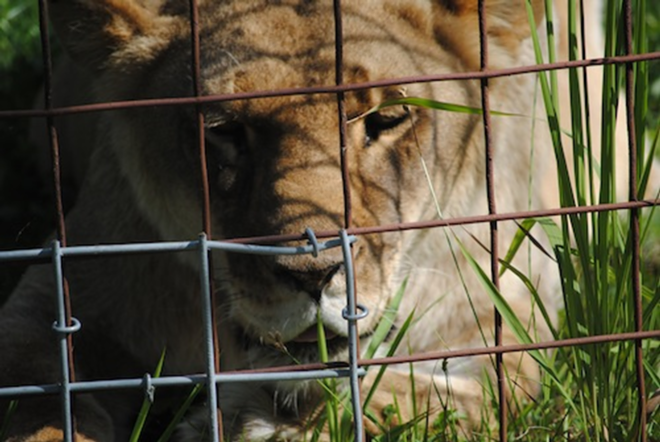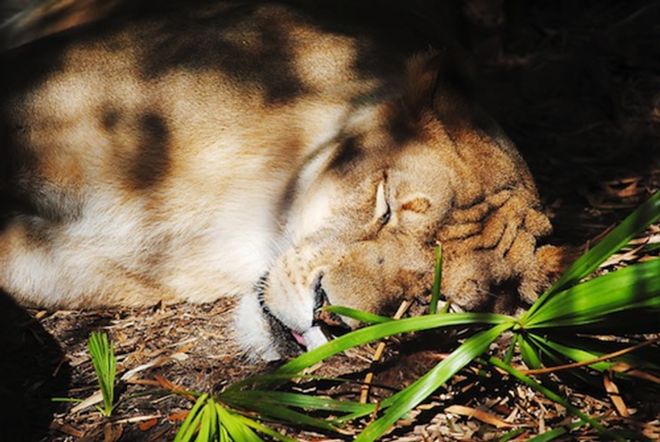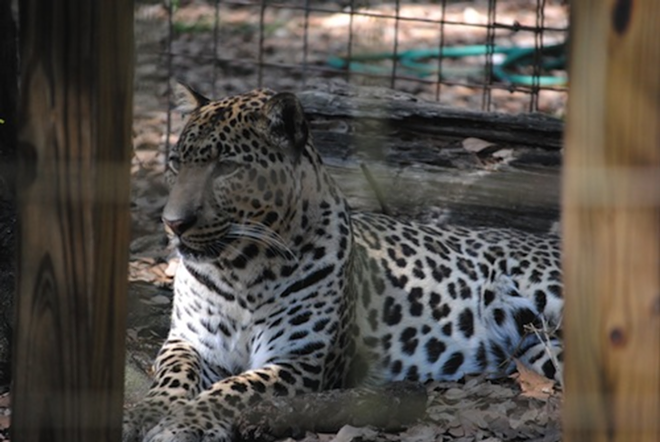
Big Cat Rescue, the Tampa sanctuary for lions, tigers and other exotic felines, has a simple mission: to one day go out of business.
“Our goal is not to have to rescue animals,” says BCR’s Jeff Kremer. “The goal is to keep the animals out of entertainment and out of the exotic pet trade.”
House Resolution 4122, or The Big Cats and Public Safety Protection Act, may help Kremer and BCR realize that dream. There’s support for the measure from Senator John Kerry and FL U.S. Representatives Kathy Castor and Gus Bilirakis, as well as from movie stars like Leonardo DiCaprio. The bill, if passed, would protect exotic cats from the risks of private ownership, illustrated by the slaughter last year of 49 animals in Zanesville, Ohio.
But there’s another camp in the debate. Private breeders worry that the new law would not only pose a threat to their pocketbooks, but to the future of the 39 species of exotic cats. The cat fight has begun.
More than 100 exotic cats live in Big Cat Rescue’s 55-acre compound in Citrus Park, which has provided sanctuary to hundreds of animals since opening 20 years ago.
Reno, a golden leopard, is a retiree from the circus. Nikita the lioness was found during a drug bust in Tennessee, chained to the wall of a crack house. A tiger named Arthur, with brother Andre and sister Amanda, was brought to BCR after his previous home, Wild Animal Orphanage in San Antonio, Texas, closed in 2010.
Then there’s Sasha. A beautiful lioness, she lived the first part of her life chained to a concrete slab in Gambler, Ohio at the International Siberian Tiger Foundation — aka the backyard of a woman named Diana McCourt. She’d had Sasha declawed and defanged to make her easier to manage when folks came to take her picture. When Sasha was finally rescued, her leather collar had grown into the skin of her neck.
Sasha is one of three BCR residents to have been stripped of their natural defenses. Kremer encourages photographers to remove their equipment from tripods when they take her photo; while the exact history is unknown, she and some of the other felines at BCR have developed a fear of anything remotely club-like.

Kremer, who is director of donor appreciation for the non-profit, feels that the biggest threat to captive exotic cats in Florida and across the country is what he calls “pay-to-play” — attractions that exploit animals for entertainment.
“Right now you can go 30 minutes from [Big Cat Rescue] and you can swim with tiger cubs, for $200, in a pool,” Kremer says. “And the media loves it because it’s great eye candy.”
Media General has run multiple stories on the attraction, Dade City’s Wild Things, including one in August, 2011, and two this year on News Channel 8 and TBO.com.
“I think what’s empowering is that all these issues facing these cats are solvable,” Kremer says. “I don’t have to do anything to solve the problems; I have to just not do some things. I have to not go to the circus or not go to the local place where they’re charging $200 to swim with tiger cubs.”

Aligned with BCR in the fight against private ownership and display are organizations like the Humane Society of the United States, the International Fund for Animal Welfare (IFAW), World Wildlife Fund and Born Free USA. Legislative supporters include U.S. Rep. Gus Bilirakis of Tarpon Springs.
“The education Big Cat Rescue provides to adults and kids alike is both informative and interesting, and it is a true treasure for Tampa Bay,” Bilirakis said. “Unfortunately, it is also a necessary role, as there are many people out there who do not treat their animals humanely or in a manner that is safe for others.”
The disaster in Zanesville, Ohio was a case in point. On Oct. 18, 2011, Terry Thompson, the owner of more than 50 exotic animals — among them lions, tigers, bears, leopards, wolves and various primates — released them from their cages before committing suicide. In the ensuing chaos, officials were forced to kill 18 Bengal tigers, 17 lions, six black bears, three cougars, two grizzly bears, two wolves and a baboon.
“It’s like Noah’s Ark wrecking right here in Zanesville, Ohio,” celebrity animal man Jack Hanna said at a press conference the next morning.
Hanna is also director emeritus of the Columbus Zoo, where six surviving animals — three leopards, two primates and a bear — were housed in the wake of the Zanesville massacre. Five of the animals were recently returned to Thompson’s widow, Marian; the zoo had to euthanize one of the leopards.
The Zanesville incident brought increased attention to big cat ownership and led to support for H.R. 4122, drawing comment from celebrity animal rights activists like DiCaprio.

















